2023 EXPRESS: Exploration of Central California Coast (AUV and Mapping)
(EX2308)
Exploration Team

Sam Cuellar
Expedition Coordinator, NOAA Ocean Exploration
Sam Cuellar is a physical scientist with NOAA Ocean Exploration. With a background in underwater archaeology, Sam specializes in mission and survey planning and the collection and interpretation of numerous types of geophysical data from oceanographic systems, including autonomous underwater and remotely operated vehicles and novel one-off technologies. Sam received his bachelor’s degree in anthropology and master’s degree in nautical archaeology from Texas A&M University, focusing on the development of a low-cost, off-the-shelf infrared imaging system to aid archaeological conservators in better diagnosing the state of recovered artifacts and revealing details invisible to the human eye. He is currently finishing his doctorate in nautical archaeology at Texas A&M, exploring the cultural maritime landscape of the abandoned 19th century port city Indianola, Texas, and surrounding Matagorda Bay. Sam’s research fuses newly collected geophysical data with ecological, historical, and archaeological contexts to better understand how various Indigenous and European groups were impacted by and morphed the landscape in which they settled. With 11 years of underwater archaeology experience, Sam has had the fortune of investigating an abandoned World War I fleet in a Texas river, excavating a wrecked 17th century Venetian merchantman carrying goods for the Ottoman Sultan in Croatia, and searching for the lost ships of Hernán Cortés along the Gulf Coast of Mexico.
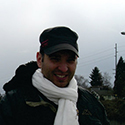
Leonardo Macelloni
Autonomous Underwater Vehicle Team Lead, Research Associate Professor, University of Southern Mississippi School of Ocean Science and Engineering
Leonardo (Leo) Macelloni is a research associate professor at University of Southern Mississippi’s School of Ocean Science and Engineering. He is a marine geophysicist with over 15 years of experience in ocean science and exploration with both academia and industry. Leo is an Italian native and received his Master of Science in geology (2001) and doctorate in applied geophysics (2005) from Sapienza University of Rome. Leo led the effort of the high-resolution mapping of the Hudson Canyon and the bio-geological characterization of several natural hydrocarbon seeps in the Gulf of Mexico, Atlantic, and Mediterranean Sea. Leo’s research interests are advanced seafloor mapping using uncrewed vehicles, sediments geo-mechanics and petrophysics, marine mineral resources, and alternative energy. In 2014, Leo was awarded the prestigious European Union Marie Curie Fellowship.
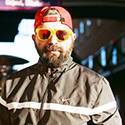
Marco D'Emidio
Autonomous Underwater Vehicle Team Lead, Senior Research Scientist, University of Southern Mississippi School of Ocean Science and Engineering
Marco D'Emidio grew up in Civitella del Tronto, a little town on the east coast of central Italy. In 2007 he received his master’s degree in geology from Sapienza University of Rome. After working as geologist and geophysicist for a private Italian geophysical surveying company, Marco joined the University of Mississippi’s Mississippi Mineral Resources Institute (MMRI) in 2010 as a GIS spatial analyst. Marco soon became chief navigator and mapper for MMRI remotely operated vehicle and autonomous underwater research expeditions, participating in 40+ expeditions. In 2021, Marco joined the University of Southern Mississippi as senior research scientist, specializing in multibeam (seafloor mapping, backscatter, water column), side-scan sonar data acquisition and processing, and managing AUV operations, planning, and logistics.
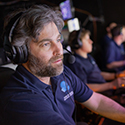
Andy O’Brien
Technical Team Lead, Global Foundation for Ocean Exploration
Andrew (Andy) O’Brien started his professional career in the U.S. Navy, where he ran a small electronic test system calibration laboratory and instructed NATO students in satellite ground station repair. Following the Navy, he obtained a bachelor’s degree in history and a master’s degree in computer science from the University of Vermont before joining Greensea Systems as the lead software engineer. During his tenure at Greensea, Andy designed, developed, and supported over 40 widely varying custom robot control systems and their operator interfaces for government and industry. Notably, Andy was the software lead on NOAA Ocean Exploration’s remotely operated vehicles Deep Discoverer and Seirios. Andy so enjoyed working with NOAA Ocean Exploration, and supporting their exploration mission, that he asked to join them. Andy now splits his time between developing software, managing science and engineering data, maintaining the satellite communications system, and navigating, piloting, and co-piloting the deep-submergence vehicles. During his free time, you can often find him in Coventry, Rhode Island.

Anna Coulson
Mapping Watch Lead, University Corporation for Atmospheric Research
Anna Coulson grew up in the United Kingdom and has a bachelor’s degree in ocean science from the University of Plymouth. After graduating, she spent 10 years sailing her own 10-meter sailboat from the United Kingdom to the Philippines and working as crew on various sail and motor boats. After sailing in many poorly charted areas, she decided to attend the postgraduate certificate program for ocean mapping/hydrographic survey at the Center for Coastal and Ocean Mapping in New Hampshire, which was followed by contract work for the Hawaii Mapping Research Group. She is currently based in Portugal and works as an independent contractor for the University Corporation for Atmospheric Research as a part of the onboard survey team.

Dan Freitas
Mapping Watch Lead, University Corporation for Atmospheric Research
Daniel Freitas is from Rochester, New York. He worked for NOAA as a general vessel assistant for over three years in the augment pool while attending Coastal Carolina University, where he studied marine biology and applied mathematics. Over the last eight years, he has worked in the deck, engineering, and survey departments aboard many NOAA vessels before taking a permanent position aboard NOAA Ship Okeanos Explorer for 1.5 years. For the last six years, he has worked as an independent contractor on Okeanos Explorer via the University Corporation for Atmospheric Research, supporting the NOAA Ocean Exploration mapping team. His time aboard consists of acting as a mapping watch lead, helping train and direct explorers-in-training, and working with the senior survey technician and other crew members to ensure the ship’s operations are completed.
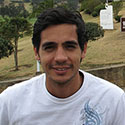
Fernando Aragon
Technical Team Member, Global Foundation for Ocean Exploration
Fernando Aragon graduated from the University of Hawai‘i at Manoa with a bachelor’s degree in mechanical engineering. During his studies, he gained experience in several fields, including conceptual design, aerospace research, mechanical design, robotics, and software development. From these activities he was able to intern for NASA at the Jet Propulsion Laboratory, present research at a national conference, and even co-author a technical paper in the Journal of the Astronautical Sciences. His most recent position was at the Field Robotics Laboratory (FRL), where he helped support operations, testing, and software development for two unmanned surface vehicles. From his time in FRL, he discovered a true passion for development and design of robotic systems. Originally from Colombia, Fernando enjoys outdoor activities and currently resides in State College, Pennsylvania.
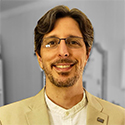
Bradley Battista
Autonomous Underwater Vehicle Team Member, University of Southern Mississippi School of Ocean Science and Engineering
Bradley Battista is a transdisciplinary geoscientist and certified geospatial intelligence professional with expertise in geospatial, geophysical, and remote sensing data processing, management, and fusion. He has led the development and implementation of innovative geotechnology solutions for various industries and domains involving centralized and distributed computing in conventional and unconventional environments. He has also conducted extensive research and published papers on topics such as nonlinear signal processing, energy and climate feasibility, and embedded systems. He is proficient in various geospatial software, programming languages, and web GIS technologies.

Roland Brian
Video and Satellite Engineer, Global Foundation for Ocean Exploration
Roland Brian brings 38 years of electronics and satellite experience, with 29 of those years focusing on television and video engineering specialization. Throughout his early years in television, Roland worked to hone his skills and experience for various television stations and remote broadcasters as well as national broadcasters ranging from CBS, PBS, CNN, CNBC, MSNBC, ESPN, Fox Sports, and the Golf Channel. With a keen eye for precise high-quality, high-definition video, he really enjoys and helps bring the imagery to life for the viewers. Roland began his career in the U.S. Air Force where he worked as a satellite communications engineering technician with visions of working on the U.S. Space Station. He traded in that quest for one of deep-ocean exploration and sharing the beautiful imagery with the world. He has worked with NOAA Ocean Exploration since 2010 and plays an integral part in telepresence-enabled remotely operated vehicle (ROV) expeditions. He has also provided engineering design, integration, and operation services for other projects using various Global Foundation for Ocean Exploration (GFOE) and NOAA Ocean Exploration mobile telepresence systems. His duties aboard NOAA Ship Okeanos Explorer include operation and maintenance of the ship's telepresence and video and satellite systems, including those on ROVs Deep Discoverer and Seirios. Again, Roland’s experience embodies the breadth and depth of knowledge that GFOE and NOAA Ocean Exploration encourage. When not at sea, Roland enjoys life with his wife and family in sunny Sarasota, Florida.

Art Howard
Video Editor, Global Foundation for Ocean Exploration
For more than 30 years, Emmy-award winning photographer and producer Art Howard has helped viewers experience life through images from 50 countries and 7 continents. A native of North Carolina, Art has followed researchers aboard multiple deep-sea missions, documenting the excitement and challenges of exploration. Art uses the latest video technology to bring viewers as close as possible to life at sea, capturing both scientists and the marine life they seek to understand. Art has spent the last 11 years independently producing media for the North Carolina Museum of Natural Sciences.
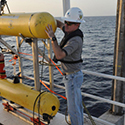
Roy Jarnagin
Autonomous Underwater Vehicle Team Member, Senior Research Engineer, University of Southern Mississippi School of Ocean Science and Engineering
Roy Jarnagin is a senior research engineer with the University of Southern Mississippi’s Hydrographic Sciences Research Center. His area of expertise is uncrewed maritime vehicles with a primary focus on autonomous underwater vehicles. He holds a Master of Science degree in ocean engineering from Florida Atlantic University and Master of Science degrees in systems engineering and engineering technology from the Southern Polytechnic College of Engineering and Engineering Technology at Kennesaw State University. In addition to more than eight years of experience in the marine vehicles field, Roy has more than twenty years of experience developing electronic systems in various industries. He has co-authored several conference papers on topics related to marine robotics.
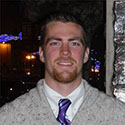
Lars Murphy
Ocean/Mechanical Engineer, Global Foundation for Ocean Exploration
Lars Murphy holds a bachelor’s degree in ocean engineering and a bachelor’s degree in Spanish from the University of Rhode Island. Growing up on the coast of Maine, he developed a constant pull toward the unknown, the unexplored, and chaotic environments and acquired a drive to bring meaning, understanding, and order to these areas. Lars has a professional background working with autonomous underwater vehicles and other subsea robotics systems both internationally and nationally and now supports remotely operated vehicles Deep Discoverer and Seirios as an ocean/mechanical engineer.
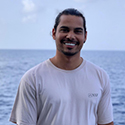
Agno Rubim de Assis
Autonomous Underwater Vehicle Team Member, Graduate Research Assistant (Ph.D. program), University of Southern Mississippi School of Ocean Science and Engineering
Agno Rubim de Assis is a doctoral student under Leonardo Macelloni at the University of Southern Mississippi (USM). He received a Bachelor of Science in oceanography from the Federal University of Espirito Santo in Brazil and has a CAT-A surveyor certification from the master of science program in hydrographic sciences at USM. His research interest is in autonomous underwater and surface vehicles focused on hydrographic surveys. Agno has been involved with several oceanographic expeditions.
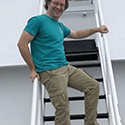
Max Woolsey
AUV Team Member, Undersea Systems Engineer, University of Southern Mississippi School of Ocean Science and Engineering
Max Woolsey received bachelor's and master's degrees in electrical engineering from the University of Mississippi. He has over a decade of experience in undersea systems engineering and has worked extensively on applications concerning uncrewed maritime systems. His publications span ecological studies involving seafloor lander experiments, seafloor imagery products, and the design of computational tools for marine research. Max has extensive experience in the design and operation of autonomous vehicles through his work with the National Institute of Undersea Technology and has participated in numerous oceanographic expeditions.
This exploration is possible thanks to the dedicated NOAA Commissioned Officer Corps and civilians who operate NOAA Ship Okeanos Explorer as part of NOAA's fleet managed by NOAA's Office of Marine and Aviation Operations.